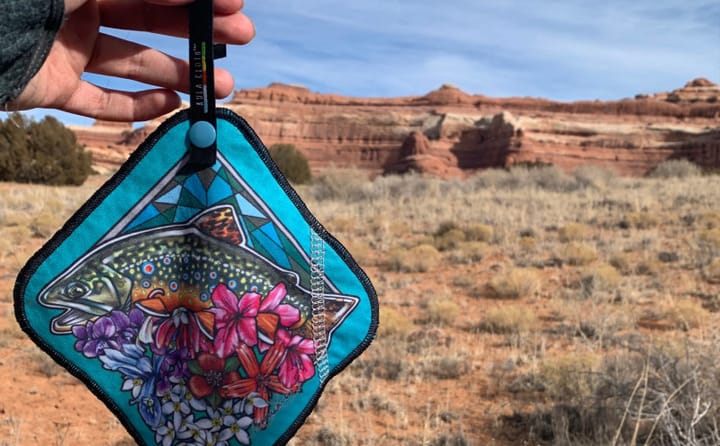How to Responsibly Hike and Backpack With a Dog: A Guide for Good Trail Manners
Hiking with your dog can be awesome! But only if done responsibly. From leash use to Leave No Trace, here’s how to protect wildlife, fragile landscapes, and other hikers while enjoying the trail with your pup.
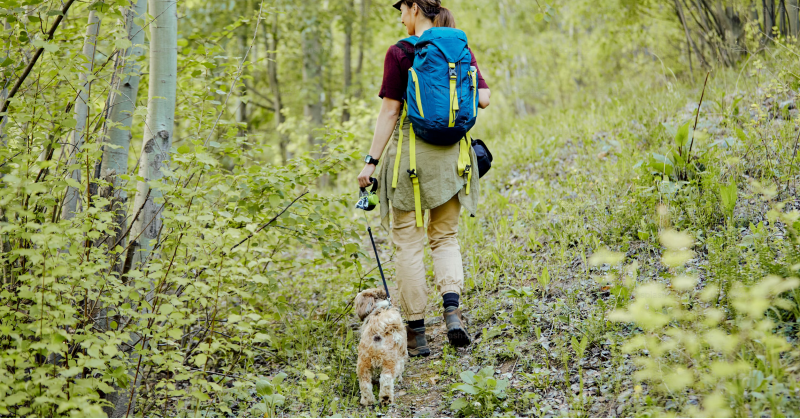
Bringing your dog on the trail can be a joy. But only if it’s done with care and respect.
As more people bring their furry companions into wild spaces, it’s more important than ever to understand how to hike and backpack responsibly with a dog. Whether you’re heading out for a casual day hike or a multi-day trip deep in the backcountry, your dog’s behavior impacts everyone—and everything—around you.

From sensitive alpine ecosystems to heavily trafficked trails, dogs can cause harm when they’re not properly managed. And while your pup might be sweet and well-behaved, not everyone on the trail feels the same way about dogs. Let’s dig into how to do better—for the landscape, for wildlife, and for each other.
1. Use a Leash- Always
Let’s start with the big one: keep your dog on a leash unless you’re in an explicitly leash-free zone (and even then, recall training should be rock solid).
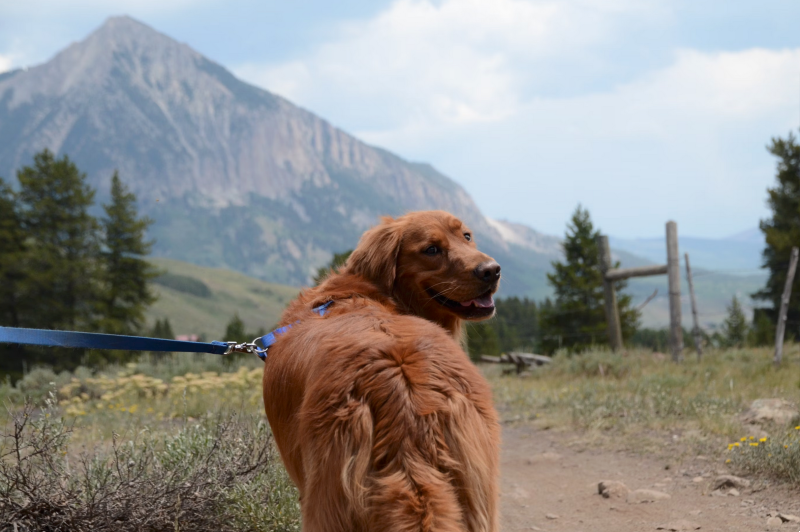
Here’s why leash use matters:
- Wildlife Safety: Off-leash dogs can chase or harass wildlife, from deer to ground-nesting birds to tiny creatures like pikas. These interactions can be fatal for wildlife or stress them during critical breeding and feeding seasons.
- Trail User Respect: Some people are scared of dogs. Others are severely allergic. A loose dog bounding up to a hiker, even joyfully, can turn someone's peaceful hike into a panic attack or a medical emergency.
- Leave No Trace: Leave No Trace principle #7 reminds us to be considerate of others. Letting a dog run wild, bark, or trample vegetation is the opposite of that.
- Shared Spaces: Hikers, trail runners, equestrians, and wildlife photographers like me often venture into wild places for solitude or specific goals. A dog that spooks animals can ruin a once-in-a-lifetime opportunity to photograph rare wildlife or enjoy a quiet sunrise.
Leashing your dog doesn’t just prevent conflict—it shows you care about the place you’re visiting and the people sharing it with you.
2. Know the Rules Before You Go
Many public lands have specific dog regulations. National parks often don’t allow dogs on trails at all. Wilderness areas may allow dogs but require leashes. And many places close areas to dogs during certain times of year to protect wildlife.
Check the rules for each trail or region before heading out. And if leashes are required, that means actual leashes—not verbal control or wishful thinking.
3. Pack Out the Poop- Every Time
Dog poop is not “just like wild animal poop.”
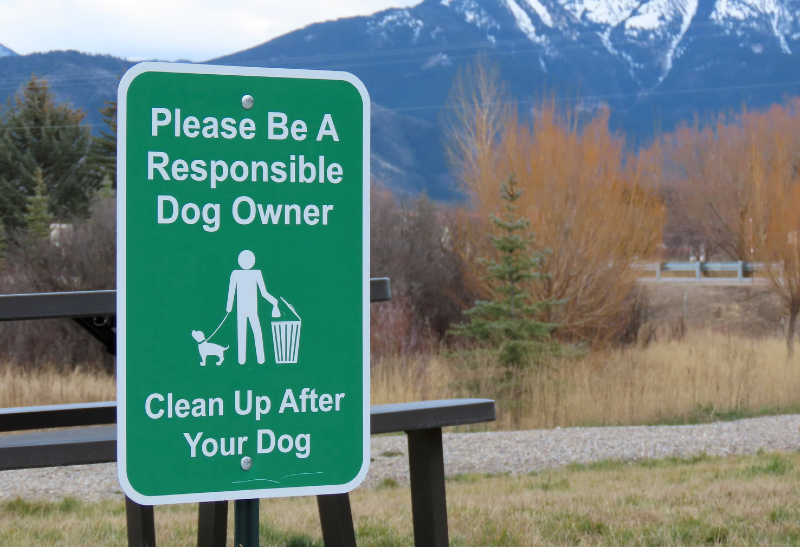
Domestic dog waste contains bacteria and parasites that don’t belong in wild ecosystems and can contaminate water sources or spread disease to wildlife.
Pack it out in a dog waste bag, and pack the bag out with you. Don’t leave it on the side of the trail “to get later.” Spoiler alert: most people don’t come back for it.
If you’re backpacking, bring odor-proof waste bags or dedicate a trash container in your bear-proof setup to carry it out properly.
4. Stay on the Trail
Just like people, dogs can damage fragile landscapes when they wander off-trail. Sensitive alpine tundra, desert cryptobiotic soil, and riparian zones are especially vulnerable. Trampling, digging, or chasing animals through these areas causes real, lasting harm.
Keeping your dog on the trail—and ideally on a short leash—helps preserve these precious places for the next hikers, and for the native species who rely on them.
5. Mind the Barking
Barking dogs can disturb the peace for other hikers and scare wildlife away from the area. If your dog is prone to barking at other dogs, people, or wildlife, it’s worth working on that behavior before heading into backcountry zones where silence is part of the experience.
6. Consider Wildlife and Other Trail Users
As a wildlife photographer, I can tell you firsthand: nothing clears out a quiet meadow like an off-leash dog.

Wildlife can abandon feeding areas or nesting spots after a single negative interaction. For those of us who wake up at 4am and hike for hours just for a glimpse of an elusive species, a dog running through the area can ruin the entire experience—and sometimes an entire shoot.
Even if you’re not a photographer, it’s still important to think beyond yourself. Respect means understanding how your dog’s behavior impacts the people—and animals—around you.
7. Is This the Right Trail for Your Dog?
Not all trails are dog-friendly, and not all dogs are trail-ready. Before you bring your pup along, ask:
- Is the terrain safe for their paws?
- Is there access to water, or will I need to carry extra?
- Can my dog handle the distance and elevation?
- Are there hazards like cliffs, sharp rocks, cacti, or snakes?
When in doubt, it’s okay to leave your dog at home. You’ll both have a better time when the trail is right for you both.
8. Trail Etiquette With Dogs 101
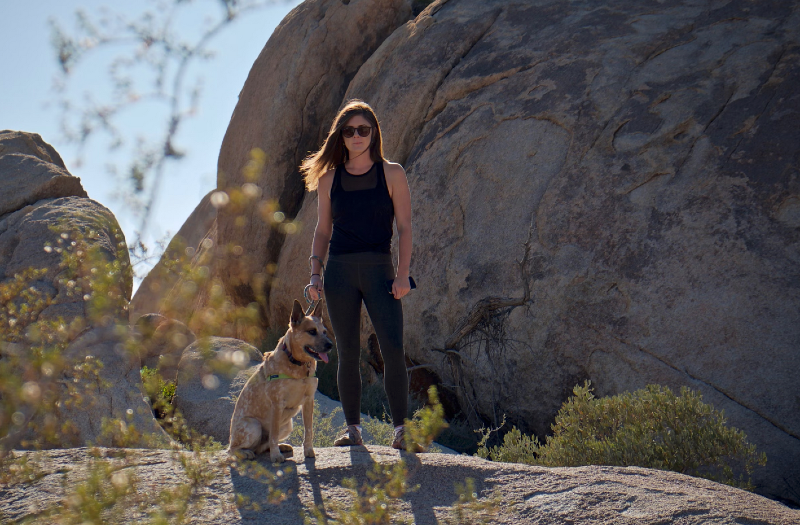
Quick refresh:
- Yield to hikers and horses.
- Step aside when passing others.
- Keep your dog close and under control at all times.
- Don't let your dog run up to strangers.
- Clean up after your dog immediately.
Good etiquette isn't just polite—it makes all of us feel welcome in wild spaces.
Hike With Love (And a Leash)
We love our dogs. But loving the outdoors means understanding that not every trail is a playground, and not every dog is ready for off-leash adventure. Hiking with a dog can be an incredible bonding experience—but only when done with care, respect, and preparation.
So clip that leash, bring extra bags, and lead by example. You’ll help protect wild places, make the trail more enjoyable for everyone else, and prove that responsible dog hikers are some of the best stewards out there.
Note: This post contains affiliate links. If you make a purchase through these links, we may earn a small commission at no extra cost to you. Thanks for supporting our work!

